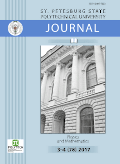
St Petersburg Polytechnic University Journal-Physics and Mathematics
Scope & Guideline
Pioneering Insights for a Scientific Future
Introduction
Aims and Scopes
- Advanced Materials and Nanotechnology:
Research on the synthesis, characterization, and applications of advanced materials, including nanostructures, thin films, and composites, focusing on their physical, chemical, and electrical properties. - Quantum Mechanics and Photonics:
Investigations into quantum phenomena, including quantum dot behavior, photon interactions, and applications in photonics, with an emphasis on novel devices and systems for communication and sensing. - Thermal and Thermoelectric Properties:
Studies exploring thermal management, thermoelectric effects, and energy conversion processes, particularly in nanostructured materials and composites. - Electromagnetic Theory and Applications:
Research on electromagnetic fields, wave propagation, and applications in optics and telecommunications, including fiber optics and integrated photonic devices. - Computational Physics and Mathematical Modeling:
Development and application of computational methods and mathematical models to simulate physical phenomena, including fluid dynamics, thermal processes, and material behavior. - Experimental Physics and Measurement Techniques:
Innovations in experimental setups, measurement techniques, and data analysis methods, enhancing precision in physical experiments and material characterization.
Trending and Emerging
- Nanostructured Materials and Devices:
There is a growing emphasis on the synthesis and application of nanostructured materials, particularly in energy conversion, photonics, and sensing technologies. - Quantum Technologies:
Research in quantum technologies, including quantum computing, quantum communication, and quantum sensing, is rapidly expanding, demonstrating the journal's alignment with cutting-edge advancements. - Multifunctional and Composite Materials:
Increasing interest in multifunctional materials that combine properties for specific applications, particularly in energy storage, conversion, and smart materials. - Machine Learning and Artificial Intelligence in Physics:
The integration of machine learning and AI techniques in physics research is on the rise, particularly for modeling complex systems and analyzing experimental data. - Environmental and Sustainable Technologies:
A notable trend towards studies focusing on sustainable technologies, including energy-efficient materials and environmental monitoring systems, reflecting global priorities.
Declining or Waning
- Classical Mechanics:
Research related to classical mechanics has seen a reduction in focus, as more attention shifts towards quantum mechanics and modern physics applications. - Traditional Semiconductor Physics:
The exploration of traditional semiconductor physics is declining, as newer materials and advanced nanostructures take precedence in research. - Static Mathematical Models:
The use of static or simplified mathematical models in research has decreased, with a trend towards dynamic, complex systems and simulations. - Basic Optical Properties:
Studies focusing solely on basic optical properties of materials without application to advanced technologies or systems have become less frequent. - Thermodynamics of Conventional Materials:
Research on the thermodynamics of conventional materials is waning, as interest grows in thermoelectric and nanostructured materials with enhanced properties.
Similar Journals
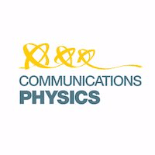
Communications Physics
Bridging gaps with groundbreaking findings.Communications Physics is a premier open access journal published by Nature Portfolio, dedicated to disseminating high-quality research in the field of Physics and Astronomy. Since its inception in 2018, the journal has rapidly established itself as a vital platform for innovative scientific communication, boasting an impressive Impact Factor and achieving Q1 status in the 2023 category of Physics and Astronomy (miscellaneous). With a Scopus rank of #31 out of 243, placing it within the 87th percentile, Communications Physics attracts a global audience of researchers, professionals, and students eager to engage with cutting-edge findings. The journal supports open access, ensuring that research is freely available to the public, which enhances its visibility and encourages broader discussions within the scientific community. Located in Berlin, Germany, Communications Physics aims to bridge the gap between various disciplines within physics, fostering interdisciplinary collaboration and inspiring future research endeavors.
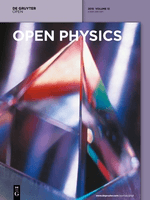
Open Physics
Empowering discovery through open access research.Open Physics, published by DE GRUYTER POLAND SP Z O O, is a leading open access journal dedicated to advancing the field of physics and astronomy. Established in 2015, this journal not only promotes the dissemination of innovative research but also emphasizes accessibility, allowing researchers, professionals, and students alike to freely engage with the latest advancements in various physics disciplines. With an impact factor that positions it within the Q3 category of the broader physics and astronomy community, Open Physics currently holds a respectable ranking of #102 out of 243 journals in its field according to Scopus, placing it in the 58th percentile. The journal encourages rigorous scholarship and the sharing of knowledge within a collaborative environment. Based in Germany, with its editorial office located in Warsaw, Poland, Open Physics is dedicated to fostering international dialogue and interdisciplinary research, making it an essential resource for those shaping the future of physical sciences.

Journal of Contemporary Physics-Armenian Academy of Sciences
Pioneering Research for a Dynamic Scientific Community.Journal of Contemporary Physics-Armenian Academy of Sciences is a distinguished publication dedicated to advancing the field of Physics and Astronomy. Published by PLEIADES PUBLISHING INC, this journal features cutting-edge research that addresses contemporary issues and developments within the realm of physics. With an ISSN of 1068-3372 and an E-ISSN of 1934-9378, the journal enjoys recognition within the academic community, currently holding a Q3 category quartile ranking in 2023, indicating its relevance and contribution to general physics and astronomy. Although the journal is not open access, it provides valuable insights and a platform for scholars and researchers to share their findings, thus promoting collaboration and innovation in the field. Based in the United States, at PLEIADES HOUSE, 7 W 54 ST, NEW YORK, NY 10019, the Journal of Contemporary Physics serves as a vital resource for researchers, professionals, and students aiming to stay informed about the latest scientific advancements and theoretical explorations.
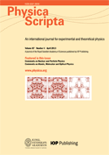
PHYSICA SCRIPTA
Elevating Academic Standards in Physics PublicationsPHYSICA SCRIPTA, established in 1970 and published by IOP Publishing Ltd, is a prestigious journal dedicated to the broad fields of physics, encompassing topics such as atomic and molecular physics, condensed matter physics, and mathematical physics. With an impressive commitment to advancing scientific knowledge, it holds a significant standing in the academic community, evidenced by its Q2 and Q3 rankings across various categories in 2023. The journal is instrumental for researchers, professionals, and students seeking to disseminate and engage with high-quality research, fostering collaboration and innovation within the field. Although it currently does not offer open access options, its robust editorial standards ensure the dissemination of impactful studies, contributing to its rising citation metrics. Published from the United Kingdom, PHYSICA SCRIPTA continues to be a vital resource for contemporary developments in physics, paving the way for future discoveries.

TECHNICAL PHYSICS LETTERS
Pioneering Practical Applications in PhysicsTechnical Physics Letters, an esteemed publication of MAIK Nauka/Interperiodica/Springer, serves as a pivotal platform for advancing the field of physics and astronomy since its establishment in 1996. This journal, with its ISSN 1063-7850 and e-ISSN 1090-6533, not only publishes high-quality research articles but also encourages innovative discussions and practical applications within the diverse realms of technical physics. With a solid reputation reflected in its Q3 category ranking within the broader physics and astronomy landscape, it aims to connect researchers and professionals who seek to address contemporary challenges and encourage multidisciplinary approaches to complex scientific problems. Although the journal does not currently offer open access options, it remains accessible to a wide readership, fostering a collaborative spirit among the scientific community. As it converges its efforts from 1996 to 2024, Technical Physics Letters is poised to be an essential resource for anyone looking to stay at the forefront of physics research.

PHYSICS OF THE SOLID STATE
Connecting Academia and Industry through Rigorous ResearchPhysics of the Solid State is a distinguished journal published by Pleiades Publishing Inc., focusing on the rapid advancements and fundamental research in the realms of condensed matter physics, electronic, optical, and magnetic materials. With an ISSN of 1063-7834 and an E-ISSN of 1090-6460, this journal serves as a crucial platform for disseminating high-quality research findings, insights, and reviews essential for both academic and industrial professionals in the field. As of 2023, its Scopus ranking places it in the 26th percentile for both Condensed Matter Physics and Electronic, Optical and Magnetic Materials, reflecting its evolving influence and contribution to the scientific community. Although currently classified in the Q4 quartile, the journal aims to foster interdisciplinary dialogue, improve research visibility, and enhance its impact on contemporary scientific challenges through rigorous peer-reviewed articles and focused special issues. Despite its traditional model of access, it continues to play a pivotal role in engaging researchers and fostering innovation in solid-state physics.

Frontiers of Physics
Exploring New Horizons in Physics InnovationFrontiers of Physics, published by Higher Education Press, is a premier open-access journal dedicated to fostering innovative research and excellence within the field of physics. With an ISSN of 2095-0462 and an E-ISSN of 2095-0470, this rapidly growing journal has established itself as a valuable platform for disseminating cutting-edge findings, covering a diverse range of topics from theoretical frameworks to experimental advancements. Notably, Frontiers of Physics has achieved an impressive Q1 ranking in the 2023 Scopus Quartiles for Physics and Astronomy, securing a competitive 5th out of 81 positions in its category, reflecting a high impact factor that underscores its importance to the scientific community. Since its inception in 2011 and continuing through 2024, the journal aims to bridge the gap between academia and industry, encouraging collaboration among researchers, professionals, and students alike. Its commitment to open access ensures that high-quality research is readily accessible, thereby promoting knowledge sharing and advancement in the global physics community. Explore the potential of your research in Frontiers of Physics, where the future of physics flourishes.

JOURNAL OF THE KOREAN PHYSICAL SOCIETY
Empowering Researchers with Cutting-Edge FindingsJOURNAL OF THE KOREAN PHYSICAL SOCIETY is a prominent academic journal dedicated to advancing the field of physics, published by the prestigious Korean Physical Society. With its extensive contribution to the scientific community since its inception in 1996, this journal serves as an essential platform for the dissemination of innovative research findings in various branches of physical science. Despite its current categorization in Q4 and a ranking reflecting its early-stage impact relative to peers, it remains a valuable resource for researchers, professionals, and students eager to explore developments in general physics and astronomy. The journal is accessible in both print and electronic formats, making it convenient for a global audience. Each issue aims to foster collaboration and knowledge-sharing within the field, ensuring that it remains relevant and instrumental in shaping future research directions. Located in South Korea, the journal continues to nurture a vibrant academic community, contributing to the ongoing dialogue in the global scientific arena.
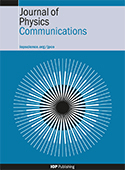
Journal of Physics Communications
Bridging Theory and Application in PhysicsJournal of Physics Communications, published by IOP Publishing Ltd, serves as a significant platform for the dissemination of innovative research in the realm of physics and astronomy. Since its inception in 2017, this Open Access journal has fostered a collaborative environment, allowing researchers, professionals, and students to share their findings and ideas without barriers. With an ISSN of 2399-6528, the journal has established its credibility in the academic community, achieving a ranking of Q3 in the 2023 category of Physics and Astronomy (miscellaneous), as well as a respectable position in Scopus with a rank of #122 out of 243 in its field. The journal's focus is on bridging theoretical concepts and practical applications, making it an essential resource for those engaged in the evolving landscape of physics. The Journal of Physics Communications not only aims to advance knowledge but also to inspire interdisciplinary collaboration, inviting contributions from diverse areas within physics. Authors and readers alike will find this journal particularly beneficial to stay updated on emerging trends and innovative research.

JETP LETTERS
Catalyzing Discoveries for the Next Generation of ScientistsJETP LETTERS, published by MAIK NAUKA/INTERPERIODICA/SPRINGER, is a prestigious journal in the field of physics and astronomy, which plays a pivotal role in disseminating groundbreaking research and innovative ideas since its inception in 1969. With an ISSN of 0021-3640 and an E-ISSN of 1090-6487, this journal aligns well with the interests of both seasoned researchers and emerging scholars, having achieved a 2023 category rank of Q3 for miscellaneous topics within physics and astronomy. Located in the United States at 233 SPRING ST, NEW YORK, NY 10013-1578, JETP LETTERS serves as a critical resource for its readership, offering exclusive insights and advancements across diverse areas of physics. While not open access, it hosts a collection of articles that refine theoretical approaches and experimental methods, providing both knowledge and inspiration to professionals and academics seeking to make impactful contributions to the scientific community. The journal’s quality is reflected in its Scopus ranking, where it stands at 39 out of 81 in the multidisciplinary category, placing it in the 52nd percentile, thus underscoring its significance and reliability as a scholarly outlet.